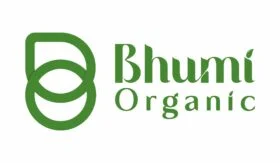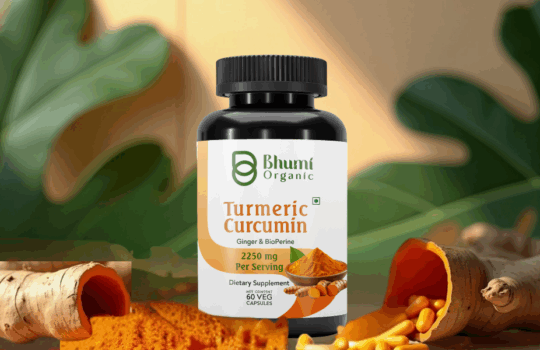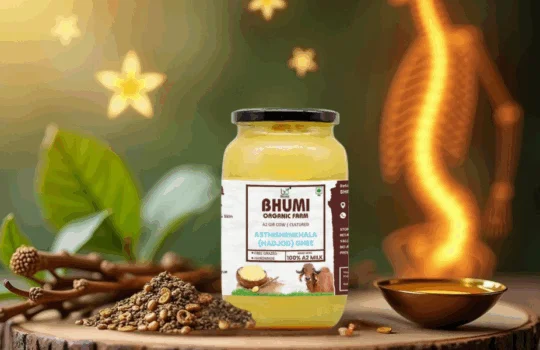The Golden Essence of Ghee: Exploring Freshness, Quality, and Varieties

The Golden Essence of Ghee: Exploring Freshness, Quality, and Varieties
Ghee, often referred to as clarified butter, has been a staple in Indian cuisine and Ayurvedic medicine for centuries. Known for its rich, nutty flavour and myriad health benefits, ghee is more than just a cooking fat—it’s a cultural cornerstone and a symbol of purity and prosperity. In this comprehensive guide, we’ll delve into the essence of ghee, exploring its freshness, quality, and varieties, and how these factors contribute to its unique characteristics and benefits.
Need some ghee? Check out our shop!
The Origins and Cultural Significance of Ghee
Ghee has a storied history that dates back to ancient India. It is mentioned in the Vedas, the sacred Hindu texts, and has been used in religious rituals, traditional medicine, and daily cooking for thousands of years. In Hindu mythology, ghee is said to have been created by the divine churning of the ocean of milk by the gods and demons, signifying its purity and divine origin.
Ghee’s cultural significance extends beyond India. It is also used in Middle Eastern, Southeast Asian, and African cuisines, albeit in different forms and under various names. In each of these cultures, ghee is cherished not only for its culinary applications but also for its medicinal properties and its role in spiritual practices.
The Science Behind Ghee: Composition and Nutritional Value
Ghee is made by simmering butter to remove water content and milk solids, leaving behind a clear, golden liquid. This process enhances its shelf life and concentrates its flavour. The primary components of ghee include saturated fats, monounsaturated fats, and small amounts of polyunsaturated fats. It is also rich in fat-soluble vitamins A, D, E, and K.
One of the unique aspects of ghee is its high smoke point, which makes it an excellent cooking medium for high-heat processes like frying and sautéing. Unlike many other oils, ghee does not break down into harmful compounds when heated, which contributes to its health benefits.
Freshness: How to Determine and Maintain It
Freshness is a crucial factor in ensuring the quality and flavour of ghee. Fresh ghee has a vibrant golden colour, a nutty aroma, and a rich, creamy taste. Here are some tips for determining and maintaining the freshness of ghee:
- Colour and Texture: Fresh ghee is typically bright yellow or golden. Over time, it may develop a slightly darker hue, but it should remain free of discoloration or cloudiness. The texture should be smooth and uniform, without any graininess or separation.
- Aroma: Fresh ghee has a distinct, nutty aroma. If the ghee smells sour, rancid, or off in any way, it is likely no longer fresh.
- Storage: To maintain the freshness of ghee, store it in an airtight container in a cool, dark place. Ghee has a long shelf life and does not require refrigeration, but keeping it in a cool environment will help preserve its flavour and quality.
- Shelf Life: Properly stored ghee can last for several months to a year. Always check for signs of spoilage, such as changes in colour, texture, or smell, before use.
Need some ghee? Check out our shop!
Quality: Factors That Influence It
The quality of ghee is influenced by several factors, including the source of the butter, the method of preparation, and storage conditions. Here are some key aspects to consider:
- Source of Butter: The quality of ghee starts with the quality of the butter used. Grass-fed butter is often considered superior because it contains higher levels of beneficial nutrients like conjugated linoleic acid (CLA) and omega-3 fatty acids. Organic, grass-fed butter is the gold standard for making high-quality ghee.
- Method of Preparation: Traditional methods of making ghee involve slow simmering, which allows for the full development of flavour and the removal of impurities. Industrial methods, while faster, may not yield the same depth of flavour or nutritional benefits. Look for ghee that is prepared using traditional methods for the best quality.
- Purity: High-quality ghee should be free of additives, preservatives, and artificial colours or flavours. Always check the label to ensure that the ghee you are purchasing is pure and free from any unwanted ingredients.
- Certifications: Certifications such as organic, grass-fed, and non-GMO can be indicators of high-quality ghee. These certifications ensure that the ghee meets certain standards of production and purity.
Varieties of Ghee
Ghee comes in several varieties, each with its unique characteristics and uses. Here are some of the most common types:
- Desi Ghee: Desi ghee is the traditional Indian ghee made from cow’s milk. It has a rich, nutty flavour and is used extensively in Indian cooking and Ayurvedic medicine. Desi ghee is prized for its purity and is often used in religious rituals.
- Buffalo Ghee: Made from buffalo milk, this variety of ghee has a higher fat content and a slightly different flavour profile compared to cow’s milk ghee. It is thicker and whiter in colour and is often used in Middle Eastern and South Asian cuisines.
- A2 Ghee: A2 ghee is made from the milk of cows that produce the A2 beta-casein protein, as opposed to the more common A1 protein. Proponents of A2 ghee claim it is easier to digest and may offer additional health benefits. This variety is becoming increasingly popular among health-conscious consumers.
- Grass-Fed Ghee: Made from the milk of grass-fed cows, this ghee is richer in nutrients like CLA and omega-3 fatty acids. It has a distinct flavour that reflects the cows’ diet and is considered one of the highest quality ghees available.
- Cultured Ghee: This type of ghee is made from cultured butter, which is butter that has been fermented with live bacterial cultures. The fermentation process gives cultured ghee a tangy flavour and can enhance its digestibility and nutritional profile.
- Spiced Ghee: Spiced ghee, also known as masala ghee, is infused with various spices like turmeric, cumin, and coriander. This variety is used to add flavour and aroma to dishes and can also provide additional health benefits from the spices.
Health Benefits of Ghee
Ghee is not only a culinary delight but also a powerhouse of health benefits. Here are some of the key health advantages of incorporating ghee into your diet:
- Rich in Nutrients: Ghee is a good source of fat-soluble vitamins A, D, E, and K, which are essential for various bodily functions, including vision, immune function, and bone health.
- Supports Digestion: Ghee contains butyrate, a short-chain fatty acid that promotes gut health by nourishing the cells lining the intestines. It also aids in the production of digestive enzymes, enhancing overall digestion.
- Boosts Immunity: The butyrate in ghee also has anti-inflammatory properties, which can help boost the immune system and reduce inflammation in the body.
- Healthy Fats: Ghee is rich in saturated fats, which are important for the absorption of fat-soluble vitamins and the production of hormones. It also contains monounsaturated fats, which are beneficial for heart health.
- Lactose-Free: During the clarification process, the milk solids, which contain lactose and casein, are removed. This makes ghee a suitable option for people with lactose intolerance or dairy sensitivities.
- Skin and Hair Care: Ghee is often used in traditional Ayurvedic beauty treatments. It can be applied topically to moisturise the skin, heal dry patches, and improve hair health.
Need some ghee? Check out our shop!
Culinary Uses of Ghee
Ghee is a versatile ingredient that can be used in a variety of culinary applications. Here are some popular ways to use ghee in cooking:
- Cooking and Frying: Thanks to its high smoke point, ghee is ideal for frying, sautéing, and deep-frying. It imparts a rich flavour to dishes and can withstand high temperatures without breaking down.
- Baking: Ghee can be used as a substitute for butter or oil in baking. It adds a unique depth of flavour to baked goods and ensures a moist, tender crumb.
- Spreading and Topping: Use ghee as a spread on toast or drizzle it over popcorn for a delicious, buttery treat. It can also be melted and poured over cooked vegetables, rice, or pasta for added richness.
- flavour Enhancer: Add a spoonful of ghee to soups, stews, and curries to enhance their flavour and provide a smooth, creamy texture.
- Traditional Dishes: Ghee is a key ingredient in many traditional Indian dishes, such as biryani, dal, and halwa. It is also used to make clarified butter sauces like hollandaise and béarnaise in French cuisine.
Ghee in Ayurvedic Medicine
In Ayurvedic medicine, ghee is considered a superfood with numerous health benefits. It is used to balance the doshas (body energies) and promote overall well-being. Here are some Ayurvedic uses of ghee:
- Internal Use: Consuming ghee is believed to improve digestion, enhance mental clarity, and boost energy levels. It is often used as a carrier for herbal medicines, as it helps transport the herbs’ active ingredients to the cells.
- External Use: Ghee is applied to the skin to promote healing, reduce inflammation, and moisturise dry or damaged skin. It is also used in Ayurvedic massages and treatments to nourish the body and mind.
- Nasal Drops: Known as “Nasya,” this Ayurvedic practice involves placing a few drops of warm ghee in the nostrils to lubricate the nasal passages, improve respiratory health, and enhance mental clarity.
- Detoxification: Ghee is used in Panchakarma, a traditional Ayurvedic detoxification process. It is believed to help remove toxins from the body, improve digestion, and rejuvenate the tissues.
Selecting the Best Ghee
When choosing ghee, it is important to consider several factors to ensure you are getting a high-quality product. Here are some tips for selecting the best ghee:
- Check the Label: Look for ghee that is labelled as organic, grass-fed, and free from additives or preservatives. Certifications such as USDA Organic and Non-GMO Project Verified can also indicate a high-quality product.
- Examine the Color and Texture: High-quality ghee should have a vibrant golden colour and a smooth, creamy texture. Avoid ghee that appears overly dark, grainy, or separated.
- Smell and Taste: Good ghee should have a pleasant, nutty aroma and a rich, buttery flavour. If the ghee smells or tastes off, it may be rancid or of poor quality.
- Source: Consider the source of the ghee. Ghee made from the milk of grass-fed cows is typically higher in beneficial nutrients and has a superior flavour compared to ghee made from conventionally raised cows.
- Price: While high-quality ghee can be more expensive, it is often worth the investment for its superior flavour and health benefits. Cheaper ghees may be made with lower-quality ingredients and industrial methods that compromise their quality.
Need some ghee? Check out our shop!
In recent years, ghee has gained popularity beyond traditional cuisines and cultural practices, making its mark in the global wellness and health community. This resurgence is part of a broader movement towards natural, whole foods and traditional dietary practices. Here’s how ghee fits into modern wellness trends:
Keto and Paleo Diets
Ghee is a favoured ingredient in ketogenic (keto) and Paleolithic (paleo) diets due to its high fat content and absence of carbohydrates. These diets emphasise consuming healthy fats for energy, and ghee, being rich in saturated and monounsaturated fats, aligns perfectly with these nutritional philosophies.
- Keto: In a ketogenic diet, the goal is to enter a state of ketosis, where the body burns fat for fuel instead of carbohydrates. Ghee’s high fat content and medium-chain triglycerides (MCTs) support this process, providing a quick source of energy and aiding in satiety.
- Paleo: The paleo diet focuses on consuming foods that would have been available to our hunter-gatherer ancestors. Ghee, made from butter but clarified to remove lactose and casein, fits within the paleo framework as a natural and unprocessed source of fat.
Lactose-Free and Casein-Free
As more people become aware of lactose intolerance and dairy sensitivities, ghee offers a solution. During the clarification process, the milk solids are removed, making ghee virtually free of lactose and casein, the proteins that can cause digestive issues for some individuals. This makes ghee a suitable alternative for those who are lactose intolerant or have dairy allergies.
Ayurveda and Holistic Health
Ayurveda, the ancient Indian system of medicine, has always celebrated ghee for its health benefits. In modern holistic health practices, ghee is being rediscovered for its role in promoting balance and wellness. Practitioners of holistic health often recommend ghee for its nourishing and rejuvenating properties.
- Dosha Balancing: In Ayurveda, ghee is believed to balance all three doshas—Vata, Pitta, and Kapha—making it a versatile food for various body types and constitutions.
- Detoxification: Ghee is used in Ayurvedic detox programs, such as Panchakarma, to help cleanse the body of toxins. It is believed to penetrate deep into tissues, removing fat-soluble toxins and supporting cellular repair.
Mental and Cognitive Health
The high content of healthy fats in ghee is beneficial for brain health. Ghee is rich in omega-3 and omega-6 fatty acids, which are crucial for cognitive function and mental health. These fats support the integrity of brain cell membranes and promote the production of neurotransmitters, improving memory, focus, and overall brain function.
Skin and Beauty Treatments
Ghee’s benefits extend to skin and hair care, and it is increasingly being incorporated into modern beauty routines. Its moisturising and healing properties make it an excellent natural remedy for various skin conditions.
- Moisturiser: Ghee can be used as a deep moisturiser for dry and flaky skin. It penetrates the skin layers, providing long-lasting hydration and a natural glow.
- Anti-Aging: Rich in antioxidants like vitamin E, ghee helps fight free radicals, which can cause premature ageing. Regular application of ghee can reduce wrinkles and fine lines.
- Hair Care: Ghee is also used in hair care for its nourishing properties. It can be applied as a hair mask to condition and strengthen hair, making it soft and shiny.
Culinary Innovations with Ghee
While ghee has traditional roots, it is also making waves in contemporary cooking. Chefs and home cooks alike are exploring innovative ways to incorporate ghee into a variety of dishes. Here are some modern culinary uses of ghee:
Gourmet Cooking
Ghee is becoming a popular choice in gourmet cooking due to its rich flavour and high smoke point. Chefs use ghee to create intricate and flavourful dishes that can withstand high temperatures without burning.
- Sautéing and Stir-Frying: Ghee’s stability at high temperatures makes it ideal for sautéing and stir-frying vegetables and meats, adding a depth of flavour that other oils cannot match.
- Baking: Bakers are experimenting with ghee to create pastries and desserts that have a unique, rich taste. Ghee can be used in place of butter or oil in recipes, giving baked goods a moist and tender texture.
Fusion Cuisine
Ghee is also finding a place in fusion cuisine, where traditional Indian flavours are blended with other culinary traditions. This cross-cultural experimentation results in exciting new dishes that celebrate the versatility of ghee.
- Ghee Roasted Vegetables: Roasting vegetables in ghee adds a nutty flavour and crisp texture, enhancing the natural sweetness of the vegetables.
- Ghee-Infused Sauces: Ghee can be used to make rich and creamy sauces that pair well with a variety of dishes, from pasta to grilled meats.
Need some ghee? Check out our shop!
Health-Focused Recipes
Health-conscious cooks are incorporating ghee into recipes to enhance their nutritional profile. Here are a few ideas:
- Bulletproof Coffee: Adding a spoonful of ghee to coffee, along with MCT oil, creates a creamy, energy-boosting beverage known as bulletproof coffee. This drink is popular among those following a keto diet.
- Smoothies and Shakes: Ghee can be blended into smoothies and shakes to add healthy fats and a creamy texture. It pairs well with ingredients like bananas, spinach, and almond milk.
Sustainability and Ethical Considerations
As the demand for ghee increases, so does the importance of sustainable and ethical production practices. Consumers are becoming more conscious of where their food comes from and the impact it has on the environment and animal welfare.
Grass-Fed and Organic Ghee
Choosing ghee made from the milk of grass-fed cows supports sustainable agriculture practices. Grass-fed cows are typically raised on pasture, which is better for the environment than grain-fed systems. Organic ghee, which is produced without the use of synthetic pesticides or fertilisers, further ensures that the production process is environmentally friendly.
Ethical Dairy Farming
Ethical considerations also play a role in the production of high-quality ghee. Look for ghee from producers who prioritise animal welfare, ensuring that cows are treated humanely and have access to pasture. Certifications such as Certified Humane or Animal Welfare Approved can help guide consumers towards ethically produced ghee.
Ghee in the Global Market
The global market for ghee is expanding as more people discover its culinary and health benefits. This growth is driven by several factors:
Rising Health Awareness
As people become more health-conscious, there is a growing demand for natural and nutrient-dense foods. Ghee, with its rich nutritional profile, fits well into this trend. Its benefits for digestion, brain health, and overall wellness are appealing to a broad audience.
Culinary Exploration
The culinary world is increasingly embracing traditional ingredients and cooking methods. Ghee’s unique flavour and versatility make it an attractive option for chefs and home cooks looking to explore new tastes and techniques.
Cultural Exchange
Globalisation and cultural exchange have introduced ghee to new markets. As people become more familiar with Indian cuisine and Ayurveda, the use of ghee is spreading beyond its traditional roots. This cultural exchange is enriching culinary practices and promoting a broader appreciation for diverse food traditions.
How to Make Ghee at Home
Making ghee at home is a rewarding process that allows you to control the quality and purity of the final product. Here’s a simple guide to making your own ghee:
Ingredients and Equipment
- Ingredients: Unsalted butter (preferably organic and grass-fed)
- Equipment: Heavy-bottomed saucepan, wooden spoon, fine mesh strainer or cheesecloth, glass jar for storage
Steps to Make Ghee
- Melt the Butter: Place the unsalted butter in the saucepan and melt it over medium heat.
- Simmer: Once the butter has melted, reduce the heat to low. Allow it to simmer gently. As it simmers, the water content will evaporate, and the milk solids will separate and sink to the bottom.
- Clarify: Continue to simmer until the milk solids turn golden brown and the liquid butter becomes clear. This process takes about 20-30 minutes. Be sure to watch it closely to prevent burning.
- Strain: Remove the saucepan from the heat and let it cool slightly. Pour the ghee through a fine mesh strainer or cheesecloth into the glass jar, leaving the browned milk solids behind.
- Store: Allow the ghee to cool completely before sealing the jar. Store it in a cool, dark place. Homemade ghee can last for several months.
Conclusion: The Golden Essence of Ghee
Ghee’s rich history, multifaceted uses, and numerous health benefits make it a remarkable ingredient that transcends cultural boundaries and modern wellness trends. From its ancient origins in Indian cuisine and Ayurveda to its place in contemporary diets and culinary practices, ghee continues to be a symbol of nourishment and vitality.
Whether you’re drawn to ghee for its culinary versatility, its health benefits, or its cultural significance, there is no denying the golden essence of this remarkable substance. By understanding how to select, use, and even make your own ghee, you can fully embrace its potential and enrich your culinary and wellness journey.
In a world that is increasingly moving towards natural and holistic living, ghee stands out as a timeless treasure—a testament to the enduring wisdom of traditional practices and the ever-evolving exploration of modern health and cuisine.
Related Articles
Categories
Recent Comments
Recent Posts
Tags
A2 milk Aged garlic Anti-inflammatory Ayurvedic medicine Bilona method Black garlic bread Black garlic chicken Black garlic extract Black garlic hummus Black garlic mayonnaise Black garlic oil Black garlic paste Black garlic powder Black garlic recipes Black garlic salt Black garlic seasoning Black garlic shrimp Black garlic steak Black garlic supplements Black garlic tofu Black garlic vinegar Butyric acid Conjugated linoleic acid (CLA) Cooking oil alternative Digestive health Fat-soluble vitamins Fermented garlic Gir cow Grass-fed cows Gut bacteria Health benefits Health benefits of black garlic Natural ghee Nutritious fat Omega-6 fatty acid Organic ghee Pure butterfat Pure ghee Rich flavour Roasted garlic Spread alternative Sweet garlic Traditional churning method Traditional Indian ghee Umami flavour




